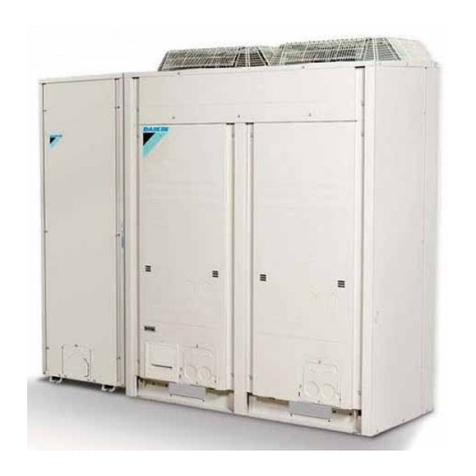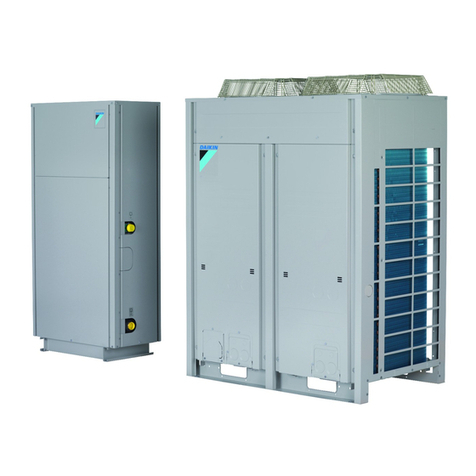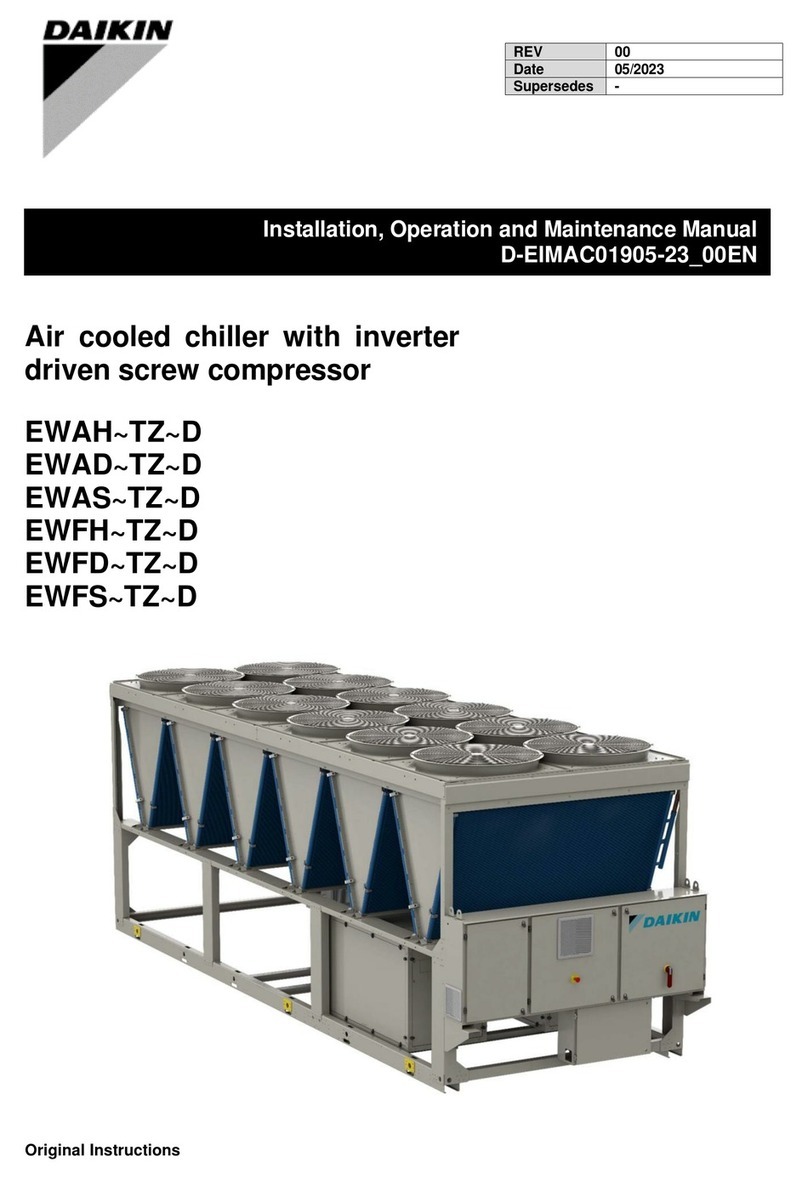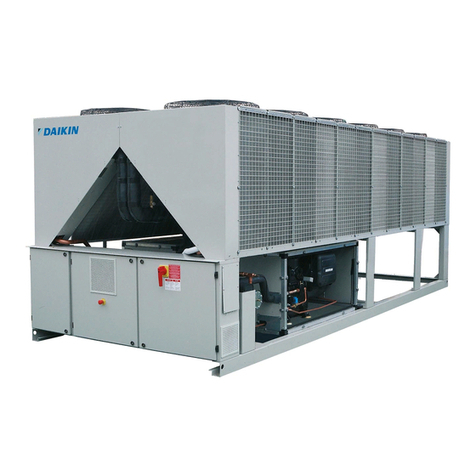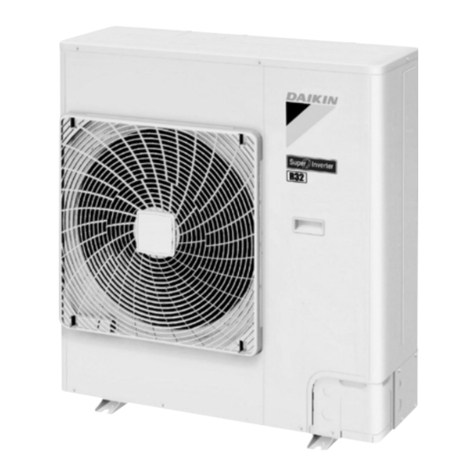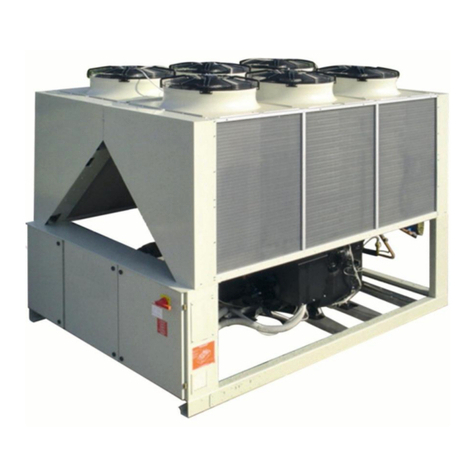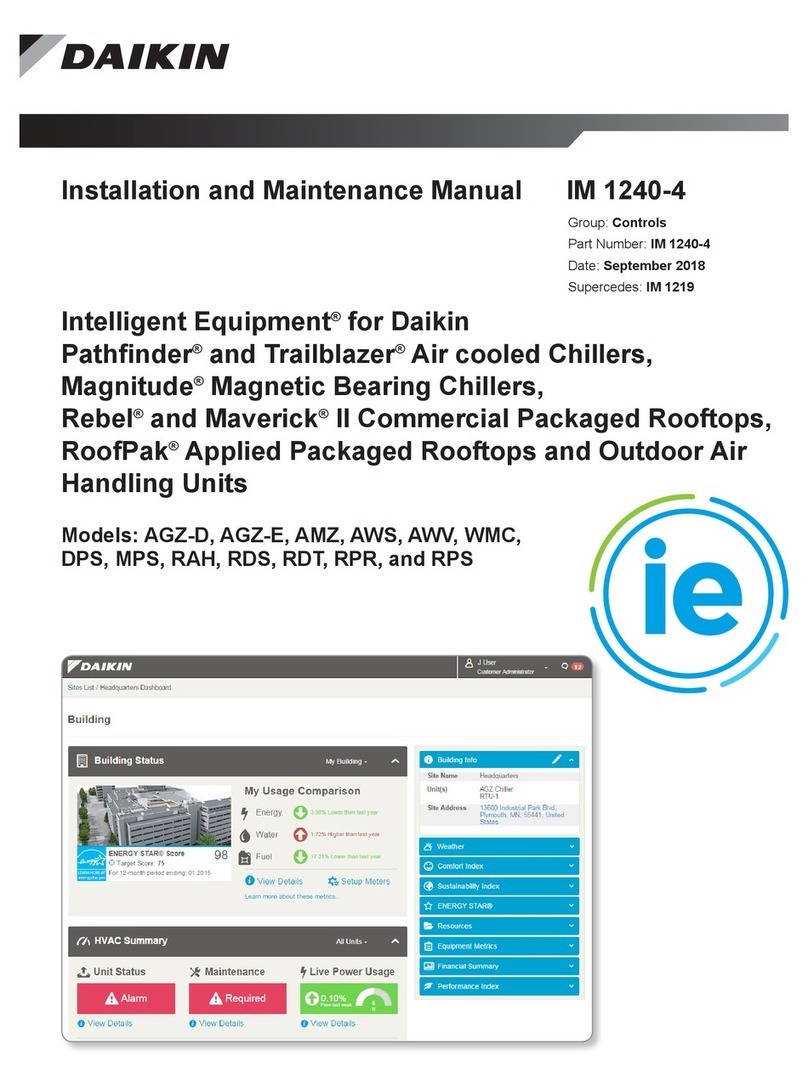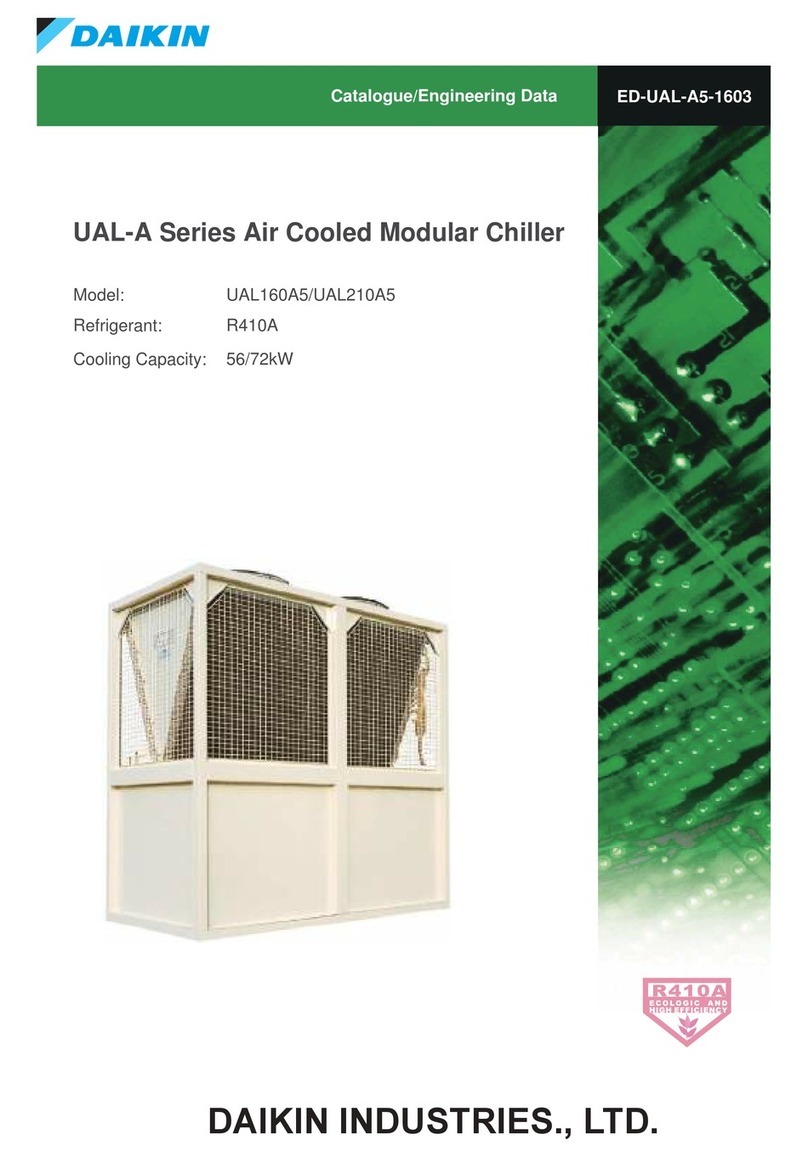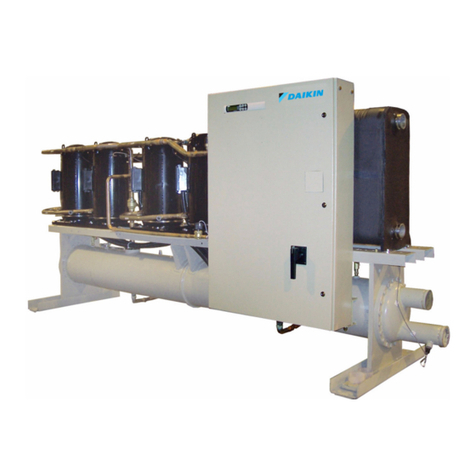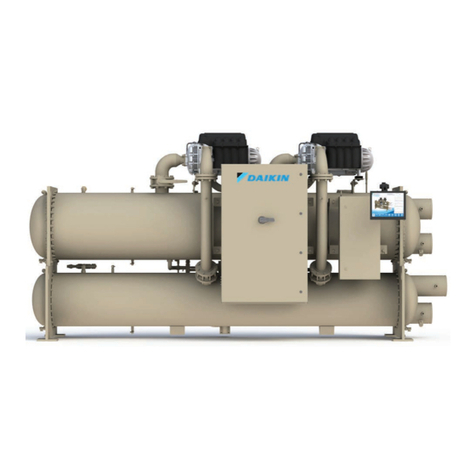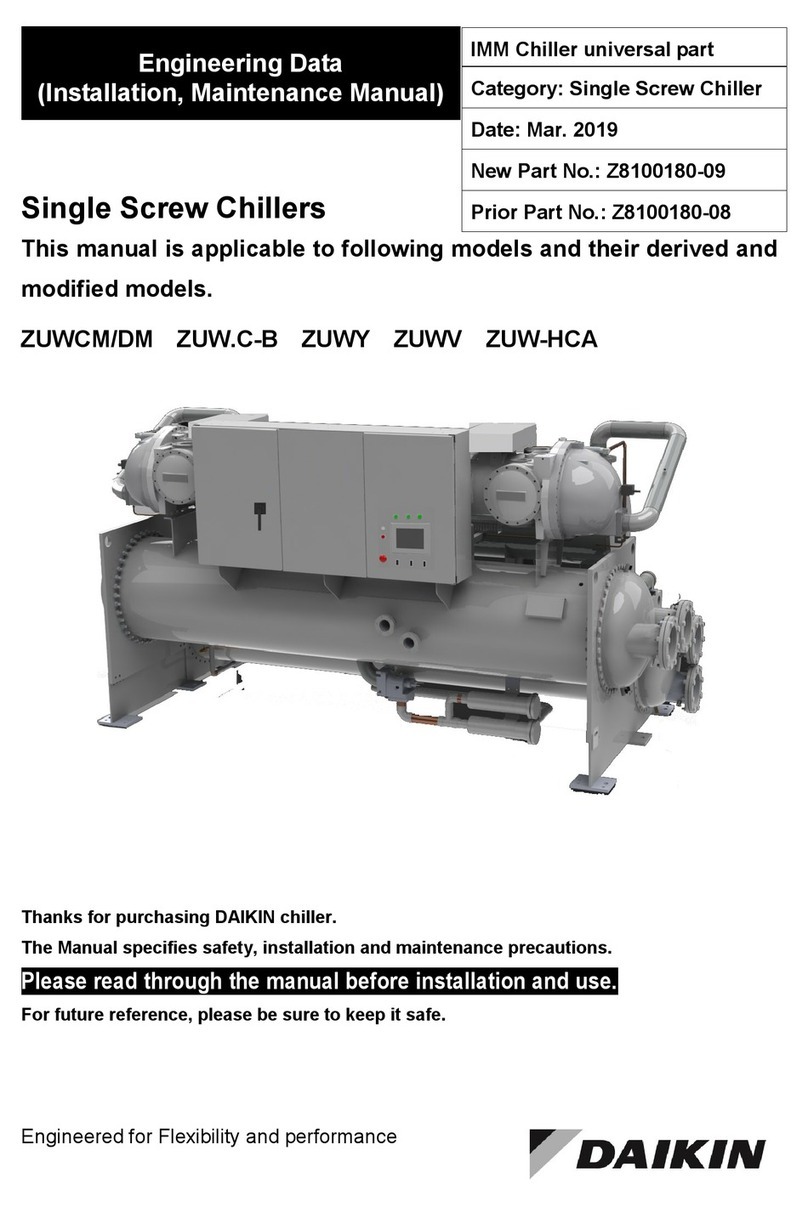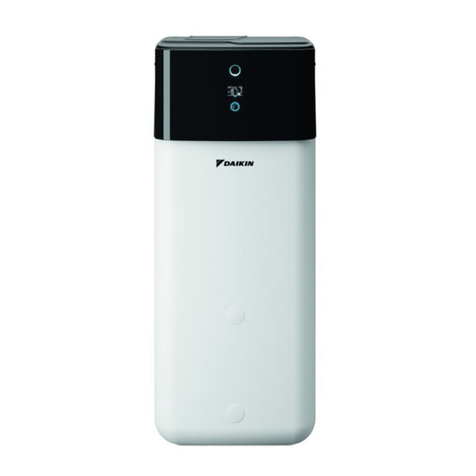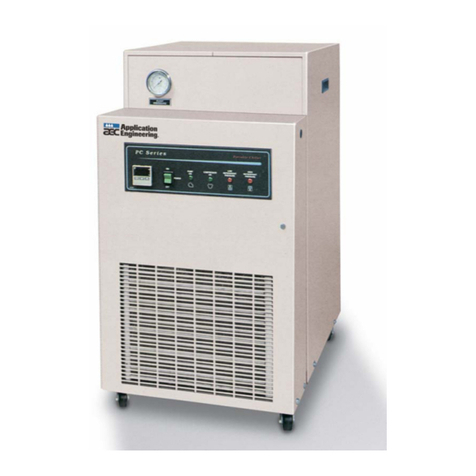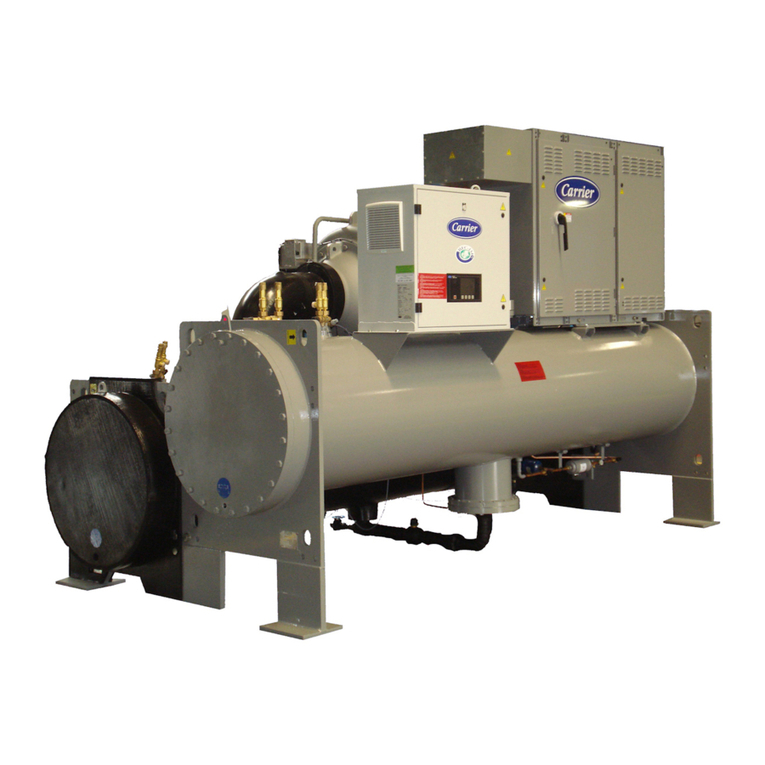
9
IOM 1264-4 WWW.DAIKINAPPLIED.COM
INSTALLATION
CAUTION
When common piping is used for both building heating and
cooling modes, care must be taken to provide that water
owing through the evaporator cannot exceed 109.4°F (43°C).
Water this hot can damage controls or cause the relief valve to
discharge refrigerant.
Piping must be supported to eliminate weight and strain on the
ttings and connections. Chilled water piping must be adequately
insulated.
Inlet Strainer Guidelines
An inlet water strainer must be installed in the chilled water piping
before the evaporator inlet. Two paths are available to meet this
requirement:
1. A eld-installed kit shipped loose with the unit that consists of:
• Y-type area strainer with 304 stainless steel perforated
basket, groove pipe connections and strainer cap
• Extension pipe with two Schrader ttings that can be used
for a pressure gauge and thermal dispersion ow switch.
The pipe provides sucient clearance from the evaporator
for strainer basket removal
• ½-inch blowdown valve
• Two grooved clamps
2. A eld-supplied strainer that meets specication and
installation requirements of this manual on www.DaikinApplied.
com.
Inlet and outlet connections are clearly marked on the unit and
also appear on the dimension drawings. Drain connections
should be provided at all low points in the system to permit
complete drainage. Air vents should be located at the high points
in the system to purge out air. A vent connection, located on top
of the evaporator vessel, permits the purging of air out of the
evaporator. Air purged from the water system prior to unit start-up
provides adequate ow through the vessel and prevents safety
cutouts on the freeze protection. System pressure should be
maintained by using a properly sized expansion tank.
Pressure gauges should be installed in the inlet and outlet water
lines to the evaporator. Pressure drop through the evaporator
should be measured to calculate proper gpm (L/s) as specied in
the Pressure Drop tables.
Source water piping may have to be insulated (depending on its
temperature) to reduce heat loss and prevent condensation if
cold water is used. If cooling tower water is used, insulation may
not be necessary. Complete unit and system leak tests should
be performed prior to insulating the water piping. Insulation with
a vapor barrier is recommended. If the vessel is insulated, the
vent and drain connections must extend beyond the proposed
insulation thickness for accessibility. If the unit operates year-
round, or if the system is not drained for the winter, the chilled
water piping exposed to outdoor ambient should be protected
against freezing by wrapping the lines with a heater cable.
System Water Volume
All chilled water systems need adequate time to recognize a
load change, respond to that load change and stabilize, without
undesirable short cycling of the compressors or loss of control.
In air conditioning systems, the potential for short cycling usually
exists when the building load falls below the minimum chiller
plant capacity or on close-coupled systems with very small
water volumes. Some of the things the designer should consider
when looking at water volume are the minimum cooling load, the
minimum chiller plant capacity during the low load period and the
desired cycle time for the compressors.
A storage tank may have to be added to the system to reach the
recommended system volume. Refer to AG 31-003 for method of
calculating “Minimum Chilled Water Volume”.
The water quality provided by the owner/occupant/operator/user
to a chiller system should minimize corrosion, scale buildup,
erosion, and biological growth for optimum eciency of HVAC
equipment without creating a hazard to operating personnel or
the environment. Strainers must be used to protect the chiller
systems from water-borne debris. Daikin Applied will not be
responsible for any water-borne debris damage or water side
damage to the chiller heat exchangers due to improperly treated
water.
Water systems should be cleaned and ushed prior to chiller
installation. Water testing and treatment should be veried
during initial chiller installation/commissioning and maintained on
a continuous basis by water treatment professionals (see Limited
Product Warranty).
CAUTION
The improper use of detergents, chemicals, and additives in the
chiller system water may adversely aect chiller performance
and potentially lead to repair costs not covered by warranty.
Any decision to use these products is at the discretion of the
owner/occupant/operator/user as such they assume full liability/
responsibility for any damage that may occur due to their use.
Vessel Drains at Startup
The unit is drained of water at the factory. Drain plugs for each
vessel head are shipped separately in the control box. Units are
shipped with the drain plug in the top water box vent hole and no
plug in the bottom drain hole. Install the bottom drain plugs prior
to lling the vessel with uid. See Figure 5.

